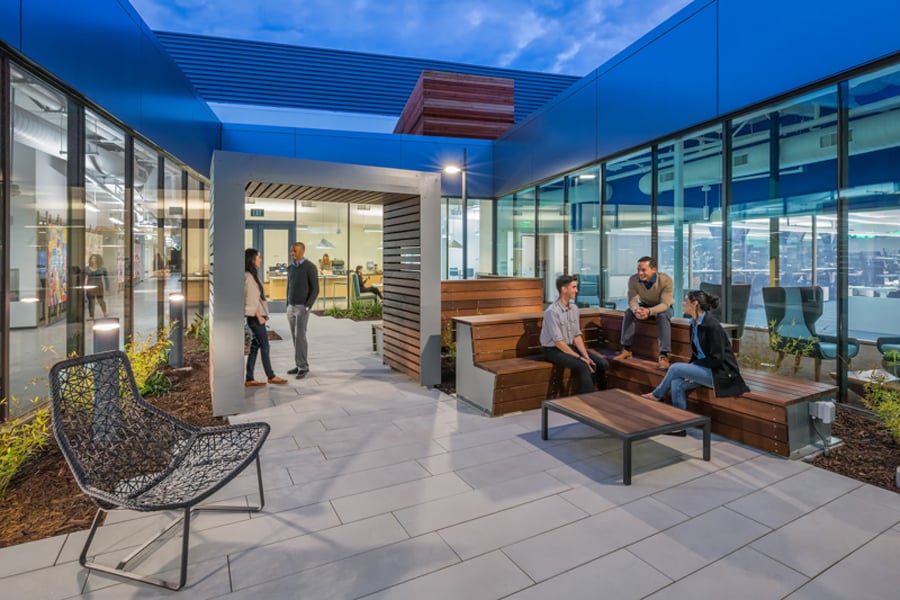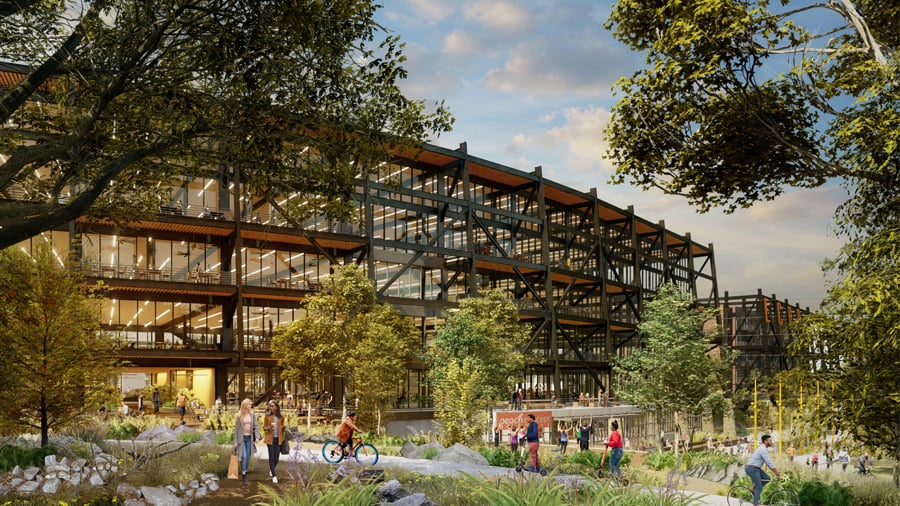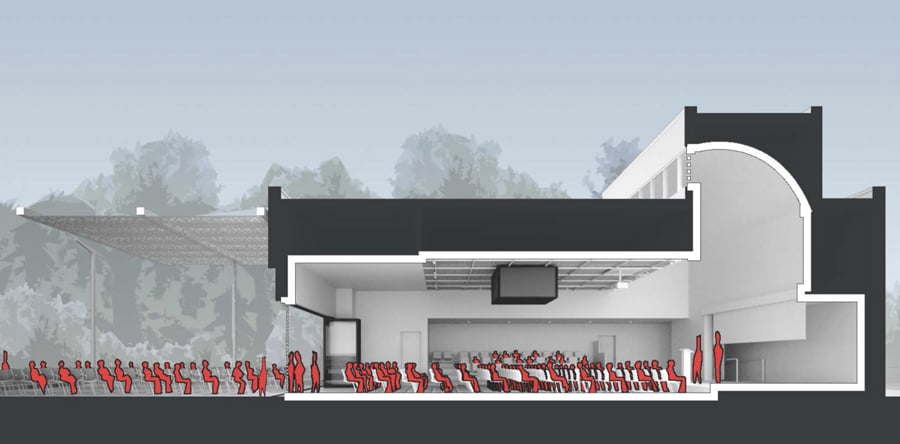
August 17, 2020
Post-COVID, More Office Designs Include Permanent Outdoor Workspaces
Designers are creating more offices that maximize opportunities to work outside.

For years now, designers have been emphasizing natural lighting, ventilation, and connectivity to nature as ways to improve employee health and wellness. Now that the coronavirus is much more likely to be transmitted indoors—the risk is nearly 20 times greater, according to one study—a strong case could be made for moving some office work completely outside. “The benefits of light and fresh air are pretty self-evident, and the pandemic only reinforces that,” says Christopher McCartin, managing director of design and construction at real estate developer Tishman Speyer, which has been including “significant outdoor space” in all of its office developments nationwide.

While employers on the temperate West Coast may have an advantage when it comes to incorporating outdoor spaces, the concept has been spreading to other climes. Los Angeles–based RIOS (formerly Rios Clementi Hale Studios) hopes their design for a 500,000-square-foot, five-story office complex in Atlanta, developed by Lincoln Property Company and currently in the permitting stage, will catch on as a model. All circulation corridors are open-air, and each floor has balconies that are at least 10 feet wide and can accommodate conference tables; they are also located on the north side of the building for shade, protected from rain by overhangs, and cooled by ceiling fans. Designed before the pandemic, the project is continuing to move forward rapidly. “The client can see that the benefits they signed up for—which seemed revolutionary at the time—are what the market is demanding,” says Mark Motonaga, creative director at RIOS.
Neglected terraces and balconies on existing office buildings are also being pressed into service. Valerio Dewalt Train is applying the same level of attention and design to terraces as to interiors for two buildings they’re remodeling in Silicon Valley. In one case, the firm is subdividing a large 3,000-square-foot terrace into several outdoor “rooms” for different uses. Bill Turner, principal at the firm’s Palo Alto office, notes that these spaces can sometimes be cold and windswept. In the past, the architects have implemented wind buffers in the form of tall glass panels, like those on a restaurant terrace, and hedges.

Elsewhere, the main conference room, which is typically one of the largest spaces in an office, is being reimagined as an indoor-outdoor space. Designed by SF Bay Area–based RossDrulisCusenbery, the Contra Costa County Sheriff’s new Emergency Operations Center in Martinez, California, has a conference room that seats a crowd of 175 on risers. But the back wall can be opened up entirely to a shaded patio via a glass garage door, to accommodate another 100 people, and provide flexible space for training sessions. “Rather than narrowly focus on customizing spaces for a specific program, we’re prioritizing them for social interactions,” says firm principal Mallory Scott Cusenbery. For another building, currently in design for Stanford University’s Department of Public Safety, the architects are extending a conference room for breakout meetings by adding lighting stanchions with built-in power outlets around an adjoining courtyard. Instead of relying on a dim laptop screen, groups will be able to give presentations on portable, high-lumen monitors.
Besides a power source and Wi-Fi, shade is critical for working outdoors. “Pavilions are great conceptually, but it’s important to fine-tune them to create workable shade,” says Motonaga. At the Playa District office complex in L.A., his firm replaced ineffective rectangular pavilions with triangular-roofed ones that maximize shade. The shade can, as Motonaga says, “move radically off the work area,” so workers could be under the canopy but still in full sun.

Privacy is another important consideration. “People don’t like to work where others can look down on them or see their screens easily,” says Motonaga. “If you have a barrier or grade change, that can make a huge difference in people’s comfort levels,” he notes. The firm has found that people tend to gravitate towards bar-height tables versus low furnishings for work, perhaps because solo workers feel lonely sitting by themselves in lounge chairs. Lightweight furniture that can be easily reconfigured is useful, in these cases—and these days, critical for social distancing.
You may also enjoy “Maintaining Work-Life Balance During and After a Pandemic”
Would you like to comment on this article? Send your thoughts to: [email protected]
Register here for Metropolis Webinars
Connect with experts and design leaders on the most important conversations of the day.
Recent Viewpoints
Viewpoints
Navigating the Path to Net Zero









